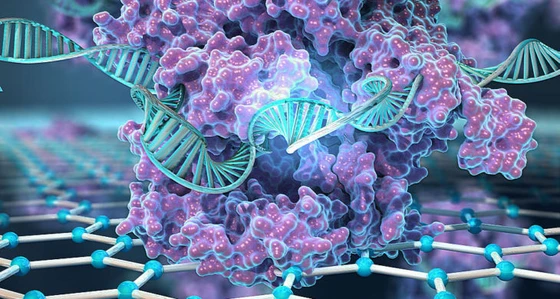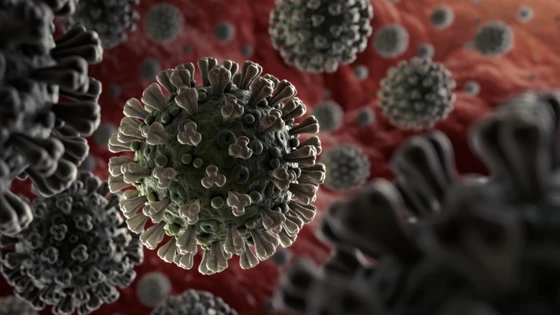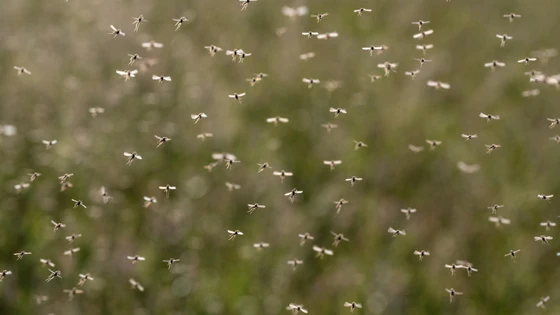The CRISPR field is moving fast! Don’t worry, we’ve got you covered. Check in every week for a quick summary of the biggest news and developments in genome engineering research so you can stay up to date with what’s happening in the world of CRISPR.
This week we report on a study published earlier this week in the journal Cell Reports. Scientists from the National University of Singapore have used CRISPR-Cas9 technology to tweak the wing color and wing scale surface structure of the East African Bicyclus anynana butterfly.
Discovering the Genes that Influence Butterfly Wing Color Patterns
Recently, another research group, also at the National University of Singapore, had uncovered the gene responsible for the unique appearance of the dorsal (top) of the wings of Bicyclus anynana; apterous A. The dorsal wing surfaces present different color patterns that serve different signaling functions. The apterous A gene was selectively removed from the butterfly’s genome using CRISPR-Cas9, and researchers demonstrated that the gene functions as both a repressor and a modifier of ventral wing color patterns, as well as a promoter of dorsal sexual ornaments in males.
This new study builds upon this existing knowledge and provides further context as to how genes work with and alongside apterous A to impact both pigment and structure of the Bicyclus anynana wings.
Using CRISPR to Change Butterfly Wing Color and Structure

Postdoctoral fellow Yuji Matsuoka used CRISPR-Cas9 to disable five of Bicyclus anynana’s genes that are central to the biosynthesis of melanin pigment (yellow, ebony, tyrosine hydroxylase (TH), DOPA decarboxylase (DDC), and arylalkylamine N-acetyltransferase (aaNAT)). This not only improved the understanding of how each of the genes contributed to the butterfly’s wing color but also led to a surprising finding. Modifying these genes also impacted the wing structure.
Specifically, changes in the levels of chitin protein influenced the butterfly wing structure. Chitin is a rigid biological molecule that forms the exoskeleton of almost all insects. Butterflies usually have a thin layer of chitin over the surface of their wings to strengthen and protect, but with changes in the pigment molecules came changes in the chitin layer.
Mutations in the yellow gene showed the most dramatic alterations with extra horizontal chitin layers on the surface of the wing scales. In contrast, mutations in the DOPA decarboxylase (DDC) gene led to taller, sheet-like vertical chitin layers throughout each scale. Matsuoka also observed changes in the scale morphology of ebony mutants, but these were minor in comparison to the yellow and DDC mutants.
Understanding Butterfly Wing Genetics May Help Bioengineer Environmentally Friendly Dyes in the Future

Current techniques for commercially producing bright colored dyes largely focus on the use of metals, which can have negative consequences on the environment with the compounds building up in water supplies. The current dyeing process is known to involve the use of dioxins and toxic heavy metals such as chrome, copper and zinc, known carcinogens that could disrupt biological materials. Scientists hope that uncovering the secrets of how butterflies generate the striking patterns on their dorsal wings may pave the way for environmentally-friendly colors in the future.
Antonia Monteiro, the lead author of this study, said in a press release, "Butterfly color has always been described as either pigmentary or structural, but our work identifies the first candidate genes that may constrain the evolution of both of these forms of generating color. If we understand the developmental genetics of color, biotech companies of the future might be able to generate vivid, brilliant colors via bioengineering, based on butterfly scales, instead of having to nano-manufacture them using metals, which is currently extremely difficult to do. These chitin-based colors would be lasting, biodegradable, and environmentally friendly."
More CRISPR in the News…
In Genetic Disorders: In vivo genome editing partially restores alpha-1 antitrypsin in a murine model of AAT deficiency
Researchers based at the University of Massachusetts, Tongji University and Wuhan University have used CRISPR-Cas9 to correct the gene mutation responsible for alpha-1 antitrypsin (AAT) deficiency in the livers of affected mice. ATT deficiency is a condition that increases the risk of lung diseases such as emphysema and chronic obstructive pulmonary disease (COPD), and the disorder affects an estimated 1 in 1,500 to 3,500 individuals with European ancestry.
In Cancer Research: Identification of an enhancer region within the TP63/LEPREL1 locus containing genetic variants associated with bladder cancer risk
Genome-wide association studies have enabled researchers to identify a bladder cancer susceptibility variant (rs710521) in a non-coding intergenic region between the TP63 and LEPREL1 genes on chromosome 3q28. Now, researchers from the Radboud University Medical Center in The Netherlands have delved deeper into this region of the genome, using CRISPR-Cas9-mediated deletion of the enhancer region to reduce the viability of bladder cancer cells.
In Mainstream Media: John Oliver Covered CRISPR and Gene Editing on Last Week Tonight… And Now This
On Sunday’s episode of Last Week Tonight, John Oliver drew attention to the complex subject of gene editing, and we were pleased to see him present a balanced and well-informed point of view. He drew attention to work being conducted to solve the problem of Lyme disease in Nantucket, and highlighted that lack of understanding is one of the most significant risks related to gene editing – and we can solve that by conducting well-designed research studies to build our knowledge. Of course, Oliver also injected some humor into his piece, though we’re not sure we’ll be seeing super muscular beagles in the wild anytime soon. We provide a full recap of this episode and also link to more resources to help continue the conversation John Oliver started.
CRISPR 101 eBook
CRISPR has quickly become a standard laboratory tool for gene editing. As the adoption of CRISPR accelerates worldwide, up-to-date knowledge of the basics of CRISPR is essential for anyone in the field. From target identification studies to the recent breakthroughs in clinical trials, CRISPR is enabling scientists to unlock the power of the genome.
Download our CRISPR 101 eBook today to stay up to date on all your CRISPR basics and get the best results in your CRISPR experiments!








